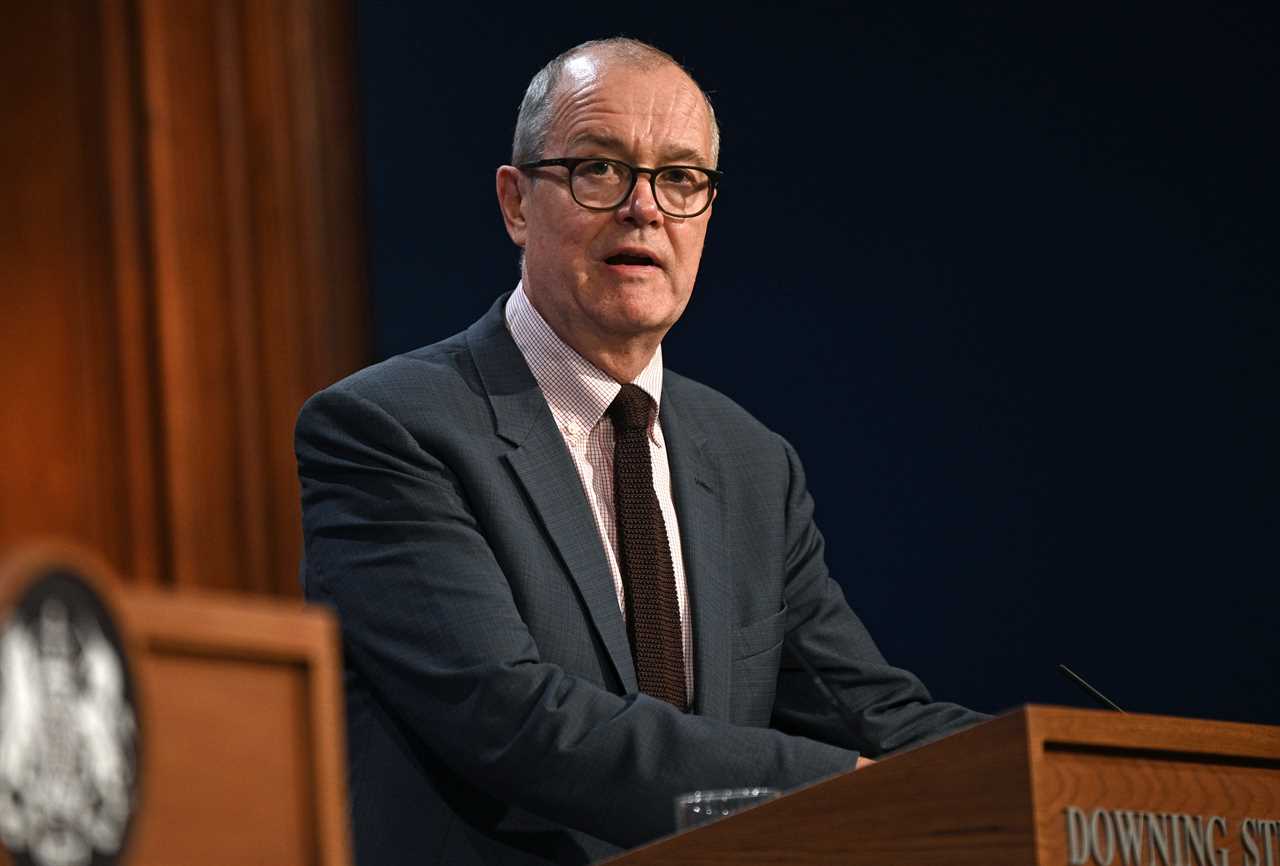TWO key factors will determine when Plan B measures to control the coronavirus come in, the top Government scientific advisor has said.
Sir Patrick Vallance, who has helped guide ministers over the pandemic, said the UK is facing a “very uncertain time” ahead.

“There is considerable uncertainty into which direction this goes,” he said.
“It does indeed depend on the degree of immunity and the amount that is protected by vaccines, and that’s why the booster shots are so important. And it depends on overall behavioral change.”
While the Government is resisting calls to implement Plan B now – relying on Plan A of booster jabs – Sir Patrick warned of acting too late.
He told BBC Radio 4’s Today programme: “You have to absolutely be prepared (for plan B) and as soon as you start thinking ‘am I, or am I not going to do this? It looks close’ is the time you need to push beyond your natural reluctance to do it and push to do it.
“This is obviously something the government will have to consider carefully but we need to be ready to move fast if that occurs.”
Asked what factors he would be keeping a close eye on, Sir Vallance said: “In terms of cases, the best indication is the ONS study which is an unbiased sample. That has fewer biases than the testing data.
“And in terms of consequences, hospitalisation, the rates of people going into hospital are a critical indicator. But they are a lagging indicator, so you need to bear that in mind.”
The ONS (Office for National Statistics) survey revealed on Friday that one in 55 people in England were currently infected with the virus.
At the peak of the second wave in January, one in 50 had Covid.
The Government testing data does not show the same pattern; there are around 46,000 cases per day compared to the January peak of 61,200.
But in the current wave, vaccines are preventing the majority of severe disease – evident in the hospital and death data.
Hospital admissions have remained relatively flat since August; around 1,000 people are admitted every day.
However, admissions over the last week are 14 per cent higher than the previous week.
Weekly deaths are also up by 5.9 per cent on the week before (1,010). Around 200 people are dying of Covid every day.
The Government has said it’s looking at a range of factors to determine whether Plan B – which involves mandatory face coverings – is needed.
It said extra measures will not be used unless the NHS is under “significant pressure” across the board – in hospitals, primary care, A&E and ambulances.
Health Secretary Sajid Javid has said “we don’t believe [pressures] are unsustainable”.
Peter Sivey, Reader in Health Economics, Centre for Health Economics, University of York, says Plan B measures seem “inevitable” unless “progress can be made on reducing cases in older age groups”.
He wrote in The Conversation: “The number of Covid patients in hospital in England reached 6,801 on October 25, the highest figure since mid-March.
“It’s worth noting that a year ago in October 2020, the government called a national lockdown when hospital occupancy reached approximately 10,000.”
Sage – the scientific advisory board to the Government, chaired by Sir Patrick – suggests a winter epidemic could be stemmed if booster jab uptake is high, and pre-pandemic behaviour returns slowly.
Modelling published on Friday shows a wave being pushed back to the spring of 2022.
But a new, grim report has warned the NHS will be overwhelmed by flu and Covid in a “twindemic” this winter.
If Covid hospitalisations remain at the level they are, and flu follows the same pattern as the years before the pandemic, the report warns the situation could quickly become difficult.
The new modelling, from health analytics firm Airfinity, found the NHS could hit capacity to deal with both killer bugs by late January in the worst case scenario.
If the flu season is the same as the last severe outbreak in 2017-2018 – when almost 50,000 cases were reported and hospital admissions hit 6,100 in a week, the “lockdown threshold” would arrive after Christmas.
Dr Matt Linley, lead analyst at Airfinity, told the Telegraph: “Vaccines are doing a great job at keeping Covid-19 hospitalisations down but admissions are unlikely to drop significantly during winter as people are more likely to meet indoors.
“Flu is back and the consensus is that this year’s flu resurgence is expected to be severe and we could see up to 6,100 hospitalisations a week for flu alone.”






